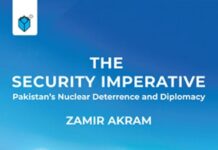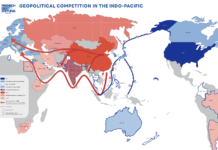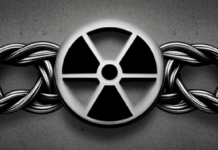Shahid Alvi
The Indian Air Force Chief, Air Chief Marshal V.R. Chaudhari recently discussed the possibility of a “short and swift war”. He said, “In the IAF, there would be a need for us to prepare for short, swift wars as well as be ready for a long-drawn standoff akin to what we are seeing in eastern Ladakh.” In and of itself , the statement does not ring any alarm bells as service chiefs routinely talk about the contours of future warfare in their regular addresses. However, in a span of just ten days, his statement was followed by threats from authoritative segments of the Indian government at a time when Pakistan finds itself in the grip of political turmoil. The chain of inflammatory and derogatory statements was started by the Defence Minister of India, Rajnath Singh, who said, “India will not hesitate to cross border if terrorists target country from outside.” To add to his sentiments, General Manoj Pande, Indian Army Chief, declared that “Narco-terror nexus is being pushed from Pakistan side, Army ready to counter any hybrid threats”, and finally Amit Shah, the Home Minister of India, came with his characteristic diatribe by claiming “Pakistan k ghar ma ghuss k marain gy” (“We will intrude and beat them inside Pakistan.”)
These statements could be interpreted in several ways given the uncertainty at the global and regional levels; however, it is important to discuss the implications of the IAF Chief’s remarks about a short and swift war. The concept of a such a war has become a popular, plausible objective since the nuclearization of India and Pakistan. Its objectives can only be achieved by air power because of its speed, reach, and extraordinary power of destruction achieved through accurate long-range air-delivered heavy loads that cannot be matched by any other service. While air forces around the world are fully cognizant of the implications of swift wars between two operationally well-prepared adversaries, the gravity of consequences have yet to be seriously analyzed beyond air force circles. In a short and swift war, all resources of the fighting air forces on both sides would be put at the disposal of the respective commanders who would employ them in a most aggressive way to inflict extreme pain on the enemy considering the brief time at their disposal before escalation reaches intolerable limits.
The astounding vertical developments and proliferation of technologies and weapons systems has expanded exponentially at the cost of human lives and the horrific images emanating from the Middle East and Ukraine speak volumes about the destruction caused by a single air attack. It is mainly the civilian populations who pay the price of such devastation.
Although treaties ban certain conventional weapons, but recent wars have seen those inventories popping out of bomb dumps. People are unaware of the effects produced by thermobaric or vacuum bombs. Similarly, Electro-Magnetic Pulse (EMP) bursts cause irreversible damage to computers and electronic systems, which are the lifeline of present day working. The effects of high explosive munitions within populated areas get multiplied in the presence of toxic sources or structurally compromised old buildings. When the weapon yield is high to affect a wide area, it is difficult to limit the harm that it will cause if used in areas where civilians are concentrated. The city of Sa’ada which was heavily hit by airstrikes during the conflict in Yemen in 2015; and the latest US drone attack that killed innocent children are just the few examples out of numerous in the past two decades. Unimaginable desolation would be further compounded by the induction of any high-speed strike weapon that could be launched from fighters and bombers and fly at hypersonic speeds to their intended target on the ground. The long-range missile systems will be able to bypass areas covered by modern air defence systems and extremely maneuverable hypersonic gliders would evade increasingly powerful missile defence systems.
Air Force commanders, having the aforementioned weapons at their disposal and a resolve to inflict maximum damage in a short and swift war, would generate, round the clock, huge raids of loaded aircraft and drones/UAVs on hard as well as soft targets. Cruise missile would reach deep targets that were otherwise considered safe due to depth in defence. Armed drones would impair military/high value industrial targets. Most industrial units in the closer belt and some major industries in the depth would be razed to the ground. Lessons from Kosovo and the Gulf War tell us that electric grid stations are key targets to disrupt electric supplies, which would, in turn, make life dysfunctional. Railway stations and goods trains would be furiously attacked to disrupt supplies. Bridges, that take years to build, would cease to exist in a matter of a very short time. They remain the most attractive targets to impede the advance of ground forces. Ordnance and defence-related manufacturing factories would attract the attention of the opposing air force to cripple the targeted state’s capability for decades to come.
All this is not a figment of imagination. It is an attainable task for any professional air force in a very short time and the world has witnessed these in recent wars. The only difference this time, compared to one-sided wars, is the fierce fight to gain control of air, which would come at the cost of attrition of opposing air forces.
What would this mean for Pakistan and India? At the strategic level, the kind of capabilities both Indian and Pakistani Armed Forces possess has a negative effect on maintaining a stable relationship. The speed with which an attack may be launched could offer less time to the respective political systems to react. This compels political leadership to adopt more aggressive doctrines and postures. As discussed earlier, cyber threats and electronic warfare have compounded the problem since they threaten to jeopardize communication and coordination between decision-makers and armed forces and even within armed forces. The race to digitalize communication and warning systems make them more vulnerable to all kinds of attacks, which would, in turn, disrupt operations and thus it would be even more difficult to calculate the threat situation.
It is a known maxim that it is easy to start a war but exceedingly difficult to stop one, since its beginning and end may not be under the control of the same man. Therefore, the expected “short and swift war” can lead to protracted war. This makes one wonder what kind of objectives IAF seeks to achieve in a short duration war. Are they inspired by Blitzkrieg, which means “lightning war” in German, suggested by 19th Century Prussian General Carl von Clausewitz who believed that a single blow against a carefully chosen target (the Schwerpunkt, or the“centre of gravity”) was more effective than dispersing those forces?
The reality is that it is a different story in the case of IAF as it faces a formidable challenge in the form of the Pakistan Air Force (PAF), which would simply not allow the former to achieve any of its objectives without being badly mauled besides the ensuing destruction of the carefully-chosen targets. The force ratio between the two air forces has remained somewhat constant in the past few decades where IAF has always enjoyed numerical superiority, but ironically (certainly not surprisingly), the kill ratio has also remained constant in all previous encounters in which PAF has shown supremacy in all domains. So, when IAF Chief says, “short and swift war,” he is not only conveniently forgetting the lessons of history but also inviting others to question his providence.
In the present era, stock markets shed billions on a single unfavourable news and if television channels are constantly flashing live scenes of wounded/dead civilians, razed industrial units, burning power plants, and destroyed communications networks with very little hope of their revival for scores of years, one cannot even imagine the cycle of economic depression that could last for decades in that country.
Introduction of very long-range gliding bombs with extreme accuracy has rendered defensive shields by aircraft and air defence missile, redundant. Hence, any swaggering about impregnable defenses is for the consumption of an uninformed public. During World War II, Germany’s industrial production was brought to near grinding halt because of aerial bombardment. Dam buster bombs on the Möhne and Eder dams in the industrial Ruhr area led to heavy flooding that slowed industrial production. Any peacetime understanding between the two rivals about the restricted use of weapons in certain domains is a contradiction in view of psychological effects of mass scale destruction.
To respond to these multiple challenges and potential catastrophe, India should strive for negotiating and finalizing Confidence- building measures (CBMs) instead of resorting to rhetoric and threats that lack substance. Promoting ideas, which will only lead to a mutual destructive path, speak of a confused mind and clouded vision. Indian Air Force Chief’s and other Indian leaders’ statements are reflective of such a blurred vision. Air Chief Marshal V.R. Chaudhari seems to be once again misjudging his country’s military capability. The embarrassment inflicted upon it in “Operation Swift Retort”, and humiliation at China’s hand in the Ladakh conflict, should serve as a sobering lesson in India’s weak military preparation and leadership, but, for the stubborn lid on the Indian mind, the problem is its delusional arrogance.
Although war may sound like an expedient arrangement to rid the neighborhood of an Indian nuisance, its leadership would do well to concentrate on the plight of its poverty-stricken and oppressed masses and suppress its urge to please the United States , its newfound master, with empty sloganeering. The reality of its capability as a “policeman” in the region on Washington’s behest is quite clear. The emperor is naked but does not know , and, in this case, even the innocent citizenry does not realize it. While history of the region and emerging geopolitical realities have escaped their attention, even an estranged neighbourhood and divided polity, has failed to convince them of the urgent and pragmatic need of a course correction. India should forswear its hegemonic ambitions and learn to live with its neighbours peacefully.
Air Marshal Shahid Alvi (Retd) is Deputy President, Centre for Aerospace & Security Studies, Lahore, Pakistan.
A shorter version of this article was published in The Nation on June 7, 2022.

















